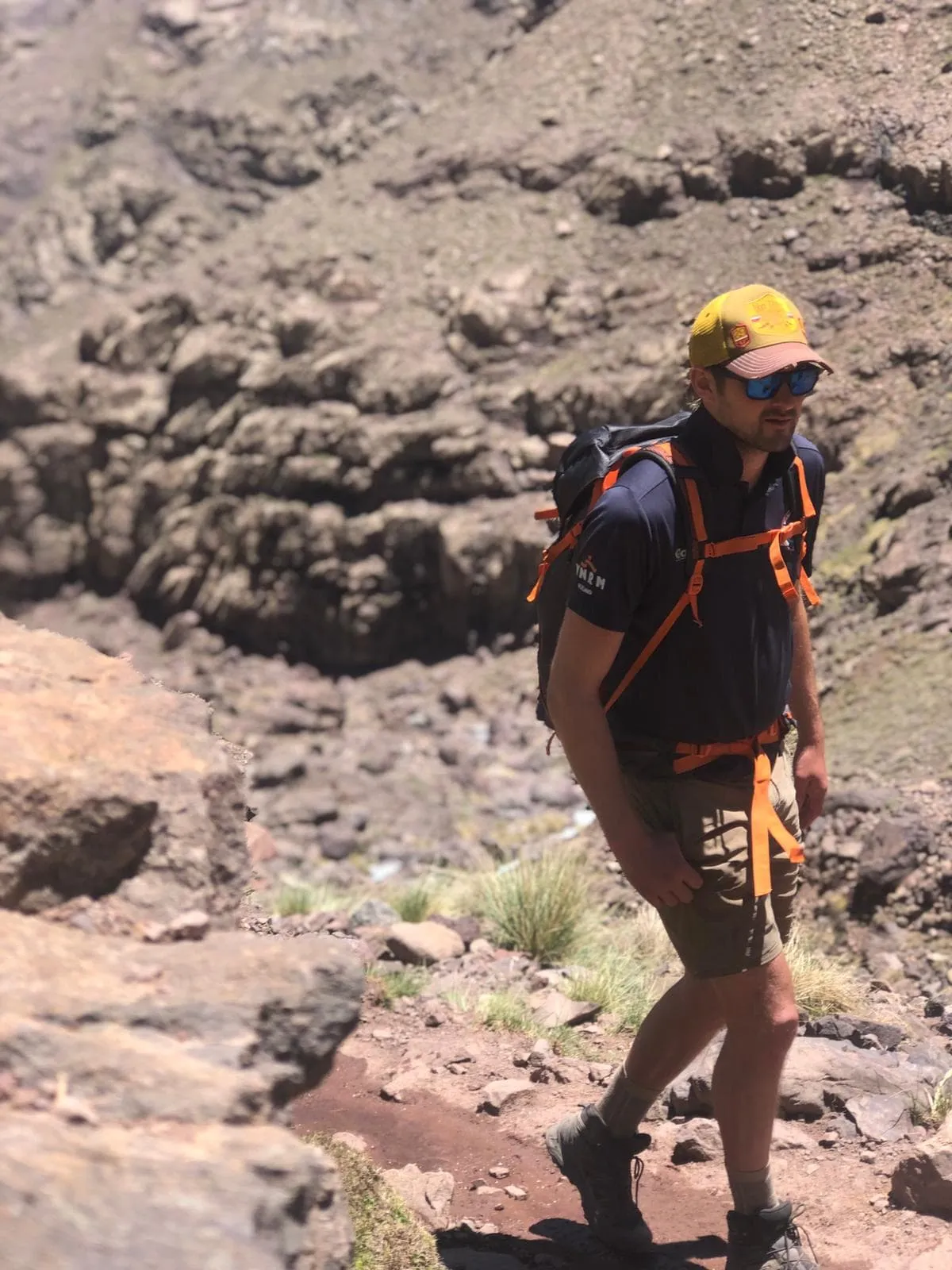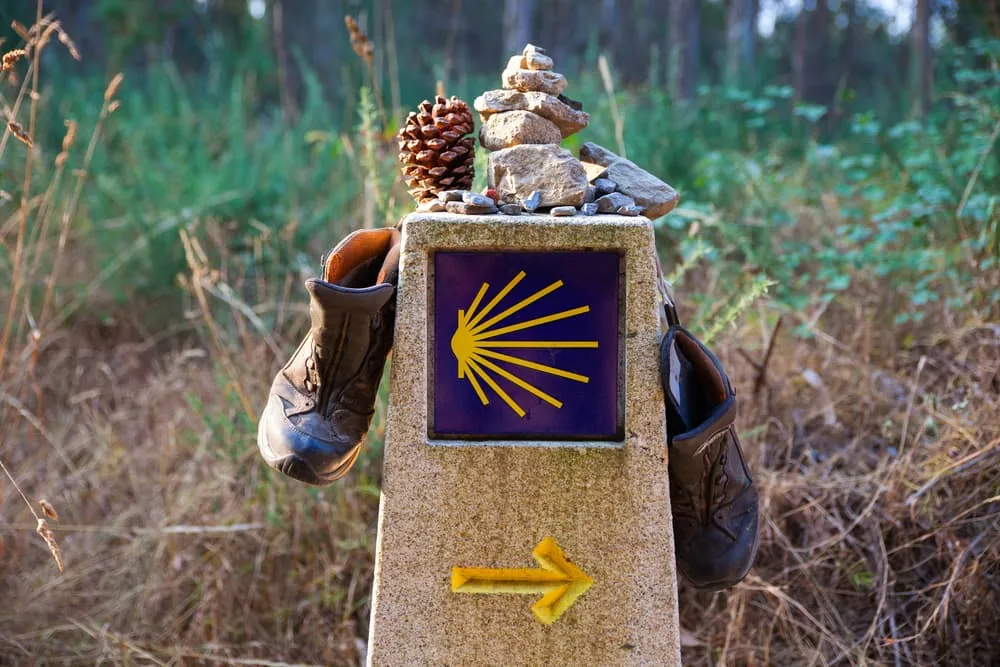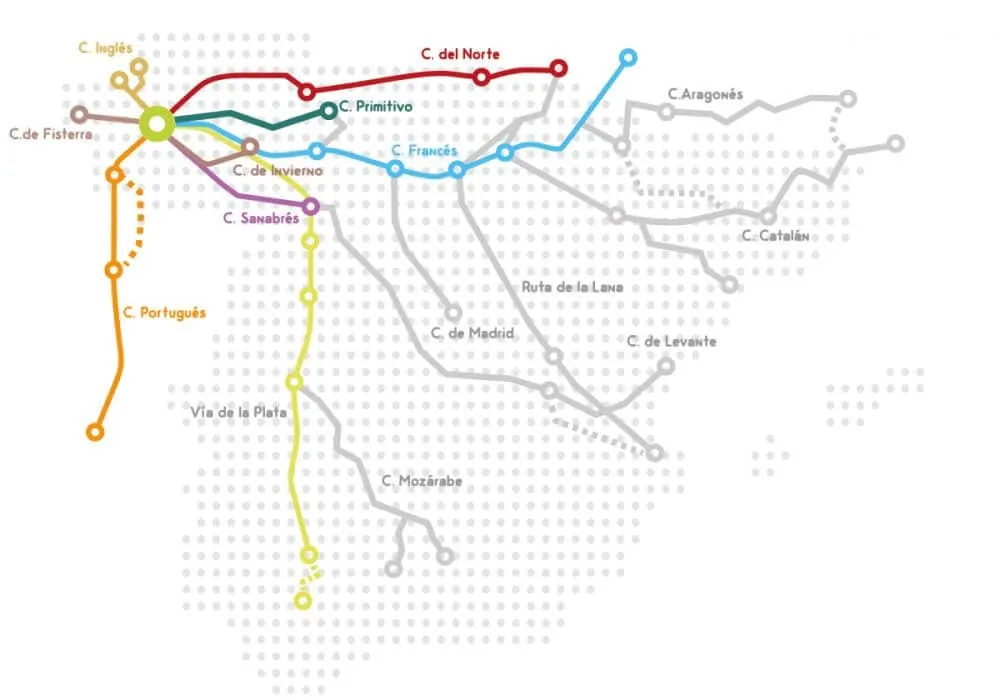As mentioned above, there are several routes that lead to Santiago de Compostela. Here is a quick description of each of them:
French Way
The French Way is one of the most popular trails and it is not difficult to understand why. If you choose to start your hiking tour in France, then your starting point for this trek will be in the heart of the vineyards in France, followed by the mountains of Galicia in northern Spain and will end in the cathedral of Santiago de Compostela. The splendid landscapes and the hospitality of the people will make your trip unforgettable. You can also start the trek withing Spain and do a shorter version of the French Way.
Portuguese Way
The Portuguese Way is a good alternative to the French Way if you are looking for an experience through more rural areas and less traveled paths. You can do the last 100 km of the Way, from the border between Portugal and Spain, or you can choose the complete pilgrimage from Lisbon. Enjoy breathtaking landscapes of the countryside, taste the best Port wine in the world, and visit historic cities and towns.
English Way
The English Way does not begin in the United Kingdom or England, as you might think. This is the traditional hiking route followed by pilgrims from overseas (from the British Isles and Ireland), starting from the Spanish port cities of A Coruña and Ferrol. It follows an epic coastal route through the forests and countryside of northern Galicia. Since this is one of the shortest routes, make sure you walk at least 100 km to receive the Official Certificate of Pilgrimage to Santiago de Compostela.
Finisterre Way
The Finisterre Route is the only route that starts in Santiago de Compostela and leads west to the Galician coast. The trek to Cape Finisterre will take you through ancient villages, forests, and along the rugged coast where you will enjoy the fresh sea breeze. Curious fact: Finisterre was thought to be the end of the world. In fact, it is the origin of the term: Finis (end) Terre (world).
Primitive Way
This route is considered the original Camino de Santiago. King Alfonso II of Asturias was the first to walk from Oviedo to Santiago to worship the remains of Santiago. In the first stage, you will walk through the same places as Alfonso II did. On the 12th day, you will join the French Way from Melide.











Comments